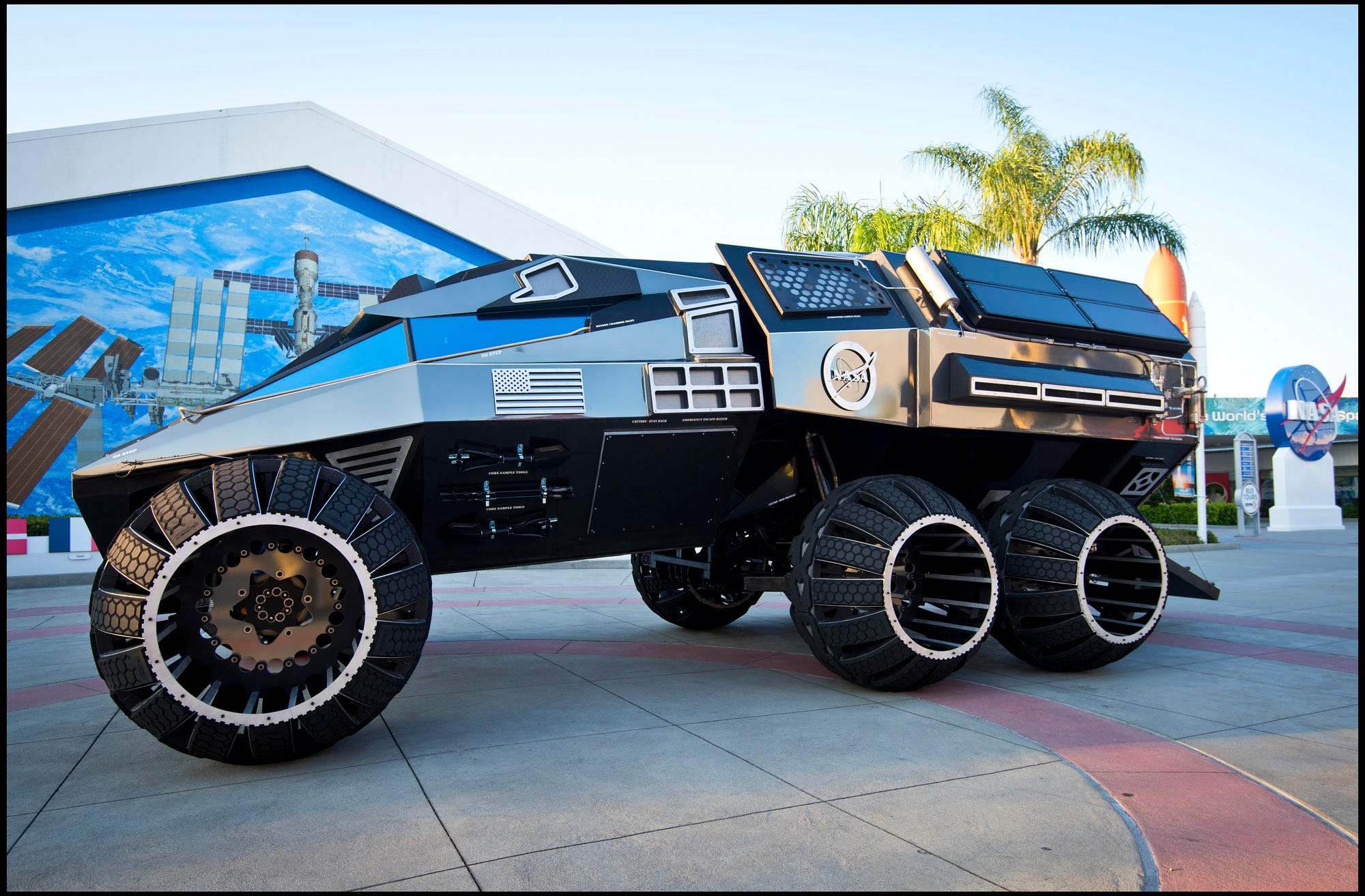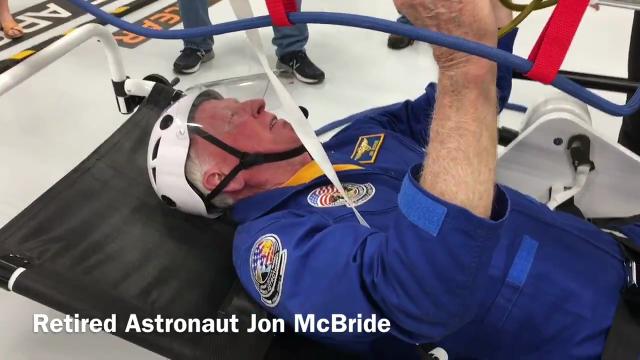
CAPE CANAVERAL — White-hot flames lick the windows as your capsule plummets through Mars' thin atmosphere to a sky crane-assisted touchdown, landing with a thud in a cloud of dust.
From there, strapped into a rover, you rock and lurch over steep, bumpy terrain toward your base camp, marked on a display by a distant yellow circle whose coordinates you radio to teammates in Mission Control.
Inside this new simulator at the Kennedy Space Visitor Complex, your training to become a Mars astronaut has begun.
“We ran into some rocks, but that’s OK,” said 10-year-old Ali Natt of Fort Lauderdale, Fla., after completing a simulated drive on the Red Planet. “It was really fun.”
More: Latest delay of tests on NASA Mars rocket draws congressional fire
More: What we learned from Elon Musk's speech about Mars, moon base
More: Psychology experiment kept six NASA subjects isolated on a Mars-like volcano for 8 months
Natt, the rover pilot, and friend Gracy Fraysure, the commander, were among the first group of guests to tour the Visitor Complex’s revamped, Mars-focused Astronaut Training Experience, or ATX.
After Monday’s “soft opening,” a grand opening is planned Feb. 6.
The new ATX is located on the Visitor Complex’s main campus, where Early Space Exploration and the Angry Birds Space Encounter used to be. It will replace programs now hosted across the river at the former site of the U.S. Astronaut Hall of Fame.
Those programs were based on the space shuttle. Given that NASA retired the shuttle in 2011, they were in need of an update.
“We’re looking at training astronauts to go into deep space,” said Dee Maynard, education manager for the Visitor Complex. “Mars is definitely a goal that NASA is pursuing and it captures the imagination and the heart.”
Two years in the making, the new ATX features three simulators and Mars Base Camp 1, activities that could take less than an hour or an entire day.
The cost: a minimum of $30 or $40 for the two simulators open now to guests age 10 or older, on top of the Visitor Complex’s base ticket price.
A pair of full-motion rover simulators are the closest thing to a theme park ride in the ATX portfolio, capable of spinning two passengers upside down on the most intense setting. They come with warnings to those prone to motion sickness.

Next to the simulators in the hangar-like Training Control Center is “Walk on Mars,” where participants don virtual reality headsets and use controllers to complete various tasks.
“You want to go northeast … stop,” 12-year-old Titusville resident C’hi Stinnett radioed from a console to her virtual reality partner, 41-year-old Samantha Thorstensen of Melbourne. “Good. That’s a rock. Pick it up.”
Obscured behind a black curtain, Thorstensen swiveled and stooped in response to Stinnett’s instructions.
The virtual Mars walkers — up to four at a time in up to four different environments — blew dust off rocks and soil samples and collected them in test tubes. They took shelter in a rover when a dust storm approached, then had to repair the damaged rover.
The partners’ combined skill and efficiency produced scores of up to five stars. Many guests found they’d only earned one or two on the first try.
A third simulator mimics a spacewalk performing maintenance on an International Space Station girder.
Spacewalkers buckle into a seat — “It looks like a dentist’s chair, but it’s not that bad,” a trainer joked — and clip on a helmet with a visor.
With a whoosh, a hose pumps a cushion of air allowing the “friction-less” chair to glide over the floor, simulating reduced gravity. Instructions and tools are provided to tighten bolts, open and close valves or unplug a Common Electronics Module.

“I did a lot of (extra-vehicular) training for my crew members back in Houston, and that’s pretty realistic training,” said Jon McBride, who piloted the shuttle Challenger in 1984.
On Monday, McBride joined Sam Durrance, a two-time shuttle flier and Florida Institute of Technology professor, training with the first ATX guests.
Each simulator relies on teams whose members take turns working "in space" or as mission controllers supporting the space work.
From the training hangar, guests may climb a ramp and ride an elevator for a launch to Mars Base Camp 1 for a day of work in operations, engineering and life sciences laboratories.
Photos: Preview of new Astronaut Training Experience






































The latter grows plants in partnership with NASA scientists performing experiments on the ISS and planning for deep space missions.
During Monday’s soft opening, the Mars lander and rover simulators experienced a few audio glitches. But C’hi Stinnett, the Titusville seventh-grader, said the experience of virtually walking on Mars felt so real she accidentally bumped into the curtains dividing participants.
She hopes professional astronauts have access to such training before they journey to Mars, a trip taking six to nine months each way that NASA hopes may be possible in the 2030s.
“That’s a really good experience to learn before they go to Mars,” Stinnett said. “It was fun. Just don’t walk into the curtain.”
Follow James Dean on Twitter: @flatoday_jdean
Mars rover concept vehicle tours the USA























